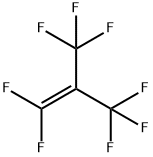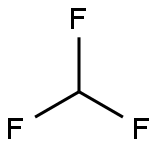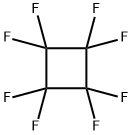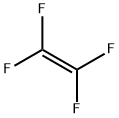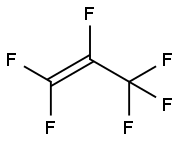Description
Perfluoroisobutylene (PFIB) is a schedule 2A substance under
the Chemical Weapons Convention, which means that while it
has significant ability to be used as a chemical weapon, it also
serves various other industrial uses.
Uses
Perfluoroisobutylene or perfluoroisobutene is a monomer used
in synthesis of Teflon and other polymeric materials. It is also
used in etching for semiconductor fabrication, and is potentially
used as a chemical warfare agent. The US Food and Drug
Administration’s CFR 21 Section 173.360 allows for use of
octafluorocyclobutane as a propellant and also allows for PFIB
at a level of <.01% as an impurity in formulation.
Synthesis Reference(s)
Journal of the American Chemical Society, 75, p. 2698, 1953
DOI: 10.1021/ja01107a044
Safety Profile
A deadly poison by inhalation. Askin, eye, and mucous membrane irritant. Human acuteexposure causes marked irritation of conjunctivae, throat,and lungs. When heated to decompos
Environmental Fate
PFIB exists as a gas in the atmosphere, and is degraded by
reaction with hydroxyl radicals, with a reaction half-life
of ~5.7 days. PFIB is not susceptible to significant photolysis.
The Henry’s law constant of PFIB suggests volatization as
an important fate process. The half lives for volatization
calculated from a model lake and river were 5.6 days and
4.1 h, respectively, though a small portion will adsorb to
suspended solids and sediment. PFIB can also volatize
substantially from moist soils, and to a small degree from dry
soils.
Toxicity evaluation
PFIB is a strong electrophile that reacts with nucleophiles. The
toxicity of PFIB may be correlated with its susceptibility to
nucleophilic attack and the generation of reactive
intermediates.
Toxics Screening Level
The ITSL for perfluoroisobutylene is 0.8 μg/m3 based on a 1-hour averaging time.
